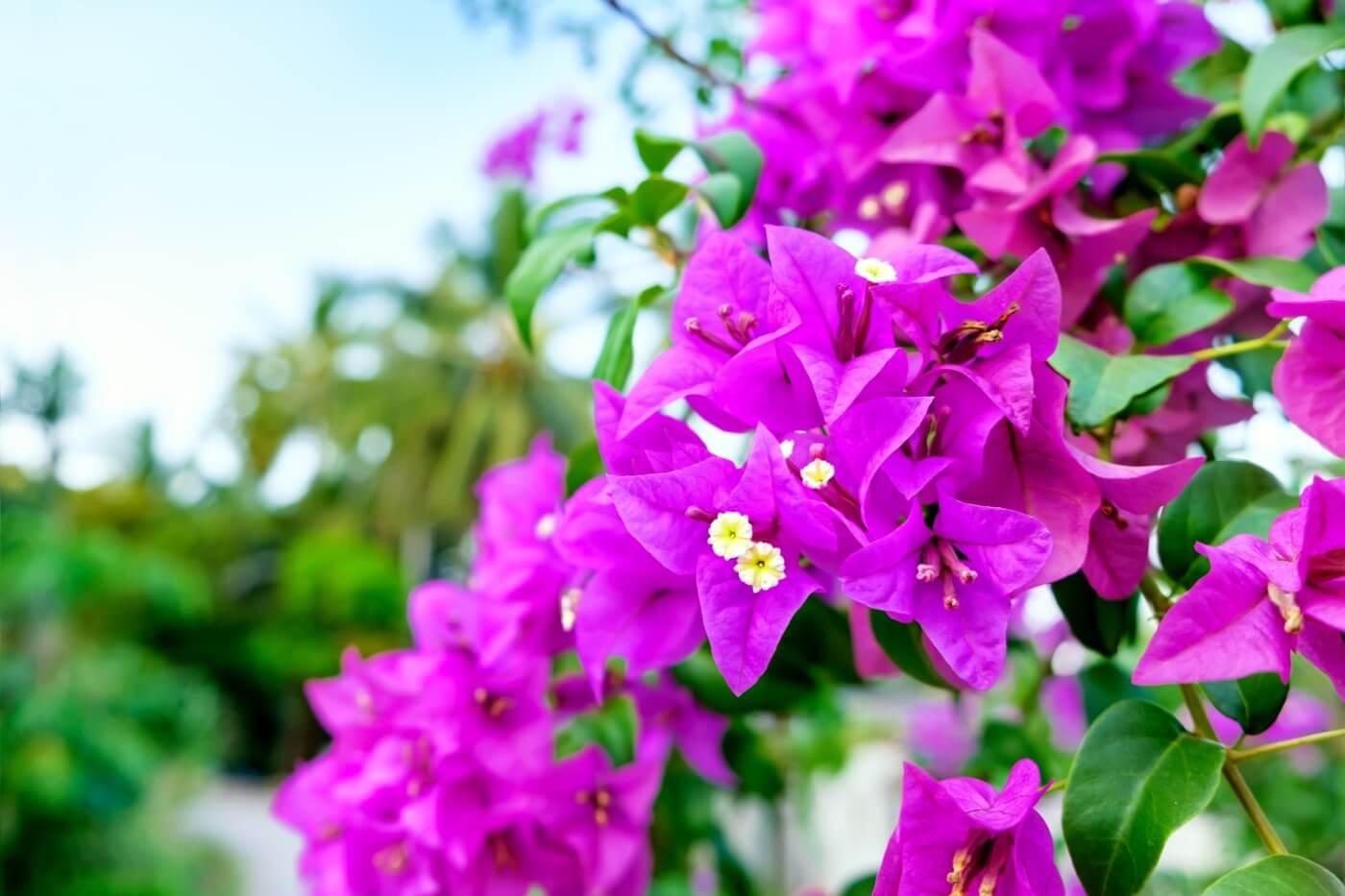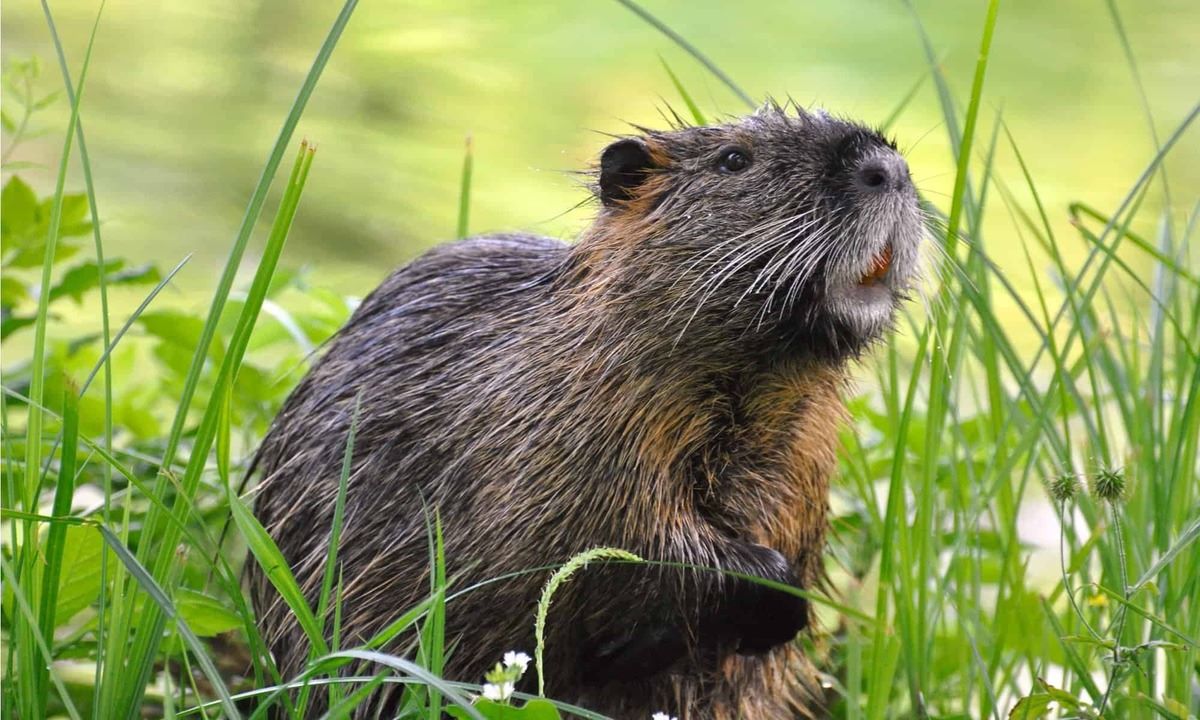
Bougainvillea is a vibrant and beautiful flowering plant that is loved by garden enthusiasts all over the world. With its stunning display of colorful blooms and ability to thrive in various climates, bougainvillea is a popular choice for adding a touch of tropical beauty to gardens, balconies, and trellises.
In this article, we will explore some fascinating facts about bougainvillea that you may not be aware of. From its origins to its symbolic meanings, there is much to learn about this captivating plant. Whether you are already a fan of bougainvillea or are simply curious about the secrets behind its allure, join us as we delve into these intriguing facts and discover the wonders of this remarkable plant.
Key Takeaways:
- Bougainvillea’s vibrant colors are actually modified leaves, not flowers. It’s a tough plant that symbolizes beauty and passion, and can be grown indoors with proper care.
- Bougainvillea is native to South America and comes in a variety of colors. It blooms all year round, attracts pollinators, and can be used for natural dyeing.
Bougainvillea is not a flower!
Contrary to popular belief, bougainvillea is actually a type of plant known as a “bracteate.” The vibrant colors that we often associate with bougainvillea are not its flowers, but rather modified leaves called bracts. The flowers themselves are small and typically white or yellow, surrounded by these showy bracts that give bougainvillea its stunning appearance.
Bougainvillea is native to South America.
The bougainvillea plant is native to South America, specifically Brazil, Peru, and Argentina. It was named after the French explorer Louis Antoine de Bougainville, who discovered the plant during his travels in the late 18th century. Today, bougainvillea can be found in many tropical and subtropical regions around the world.
Bougainvillea comes in a variety of colors.
Bougainvillea is known for its vibrant and eye-catching colors. While the most common color is bright pink, these plants can also produce flowers in shades of red, orange, purple, white, and even yellow. The variety of colors makes bougainvillea a popular choice for adding a pop of color to gardens and landscapes.
Bougainvillea is a hardy and resilient plant.
Bougainvillea is a tough plant that can thrive in a variety of environmental conditions. It is well-suited for hot and dry climates, making it a popular choice for gardens in arid regions. Bougainvillea is also resistant to pests and diseases, making it relatively low-maintenance compared to other plants.
Bougainvillea can grow as both a shrub and a vine.
Bougainvillea is a versatile plant that can be trained to grow as a shrub or a vine. When left untrimmed, it can develop into a sprawling and bushy shrub with cascading bracts. However, with proper pruning and support, bougainvillea can also be trained to climb walls, fences, and trellises, creating a stunning display of color.
Bougainvillea blooms all year round.
One of the remarkable qualities of bougainvillea is its continuous blooming cycle. While the intensity of the blooms may vary throughout the year, bougainvillea typically produces flowers or bracts all year round. This prolonged blooming period adds to its desirability as an ornamental plant.
Bougainvillea is a symbol of beauty and passion.
In many cultures, bougainvillea symbolizes beauty, passion, and abundance. It is often associated with warm climates, vibrant celebrations, and the joy of life. Bougainvillea’s striking appearance and resilience make it an ideal representation of these qualities.
Bougainvillea can be used for natural dyeing.
The bracts of bougainvillea plants can be used to create natural dyes. The colors extracted from the bracts can be used to dye fabrics, papers, and even food. This unique characteristic adds to the versatility and usefulness of this remarkable plant.
Bougainvillea prefers full sun and well-draining soil.
For optimal growth, bougainvillea thrives in full sunlight and well-draining soil. It requires at least six hours of direct sunlight each day to produce abundant blooms. Proper drainage is also essential to prevent root rot and maintain the plant’s overall health.
Bougainvillea is a favorite of pollinators.
The small flowers of bougainvillea, although inconspicuous compared to the bracts, attract various pollinators such as bees, butterflies, and hummingbirds. These pollinators play a crucial role in the plant’s reproductive cycle, ensuring the continuation of its species.
Bougainvillea can be grown indoors.
While bougainvillea is typically grown outdoors in warmer climates, it can also be successfully grown indoors as a houseplant. With proper care and attention to sunlight, temperature, and humidity, bougainvillea can add a touch of tropical beauty to your home.
Conclusion
Bougainvillea is a fascinating plant that captivates with its vibrant colors and ability to thrive in various climates. From its origin in South America to its popularity as a decorative plant worldwide, bougainvillea has a rich history and interesting characteristics that make it a favorite among garden enthusiasts.
Whether you’re planning to grow bougainvillea in your garden or simply appreciate its beauty, these 11 intriguing facts about bougainvillea shed light on its unique qualities. From its delicate paper-like flowers to its ability to bloom year-round, this plant is truly a sight to behold.
Take the time to learn about bougainvillea, and you’ll discover a world of beauty, resilience, and botanical wonder. So next time you encounter bougainvillea, you’ll have a deeper appreciation for its significance and the remarkable qualities that make it such a beloved plant.
FAQs
1. How do I care for bougainvillea?
Bougainvillea thrives in full sun and well-drained soil. Water it regularly but avoid overwatering, as it prefers a drier environment. Prune it regularly to control its size and promote new growth.
2. Can I grow bougainvillea indoors?
While bougainvillea is primarily an outdoor plant, it can be grown indoors in pots as long as it receives ample sunlight. Place it near a south-facing window or use grow lights to provide sufficient light.
3. Are bougainvillea flowers really colorful?
Yes, bougainvillea flowers come in vibrant shades of pink, purple, red, orange, and white. However, it’s important to note that the colorful parts of the plant are actually modified leaves called bracts.
4. Does bougainvillea require a lot of maintenance?
Bougainvillea is relatively low-maintenance. Regular pruning and occasional fertilizing are all that’s needed to keep it healthy and blooming. However, it’s worth noting that certain varieties may require more care than others.
5. Is bougainvillea resistant to drought?
Yes, bougainvillea is known for its drought tolerance. It has adapted to grow in arid conditions and can withstand periods of water scarcity without suffering significant damage.
6. Can bougainvillea be grown in containers?
Yes, bougainvillea can be grown in containers or pots. Just make sure the container has good drainage and use a well-draining potting mix. Remember to provide adequate support for the vine-like growth.
7. How long do bougainvillea flowers last?
Bougainvillea flowers typically last for a few weeks, but the plant can continue to produce new flowers throughout the year, especially in warm climates. Regular deadheading can help promote continuous blooming.
8. Is bougainvillea a fast-growing plant?
Yes, bougainvillea is known for its fast growth rate. Once established, it can grow several feet in a single year. Regular pruning can help control its growth and shape.
9. Can bougainvillea tolerate cold temperatures?
Bougainvillea prefers warm climates and can be damaged by freezing temperatures. However, some cold-hardy varieties have been developed that can withstand mild frosts.
10. Is bougainvillea toxic to pets?
While bougainvillea is not toxic to pets, its thorns can cause mechanical injuries. It’s important to keep pets away from the plant and provide a safe environment for them to avoid any potential harm.
11. Can I propagate bougainvillea from cuttings?
Yes, bougainvillea can be easily propagated from cuttings. Take 6-8 inch stem cuttings and remove the leaves from the bottom half. Dip the cut end in rooting hormone and plant it in a well-draining potting mix. Keep the soil moist until roots develop.
Was this page helpful?
Our commitment to delivering trustworthy and engaging content is at the heart of what we do. Each fact on our site is contributed by real users like you, bringing a wealth of diverse insights and information. To ensure the highest standards of accuracy and reliability, our dedicated editors meticulously review each submission. This process guarantees that the facts we share are not only fascinating but also credible. Trust in our commitment to quality and authenticity as you explore and learn with us.


